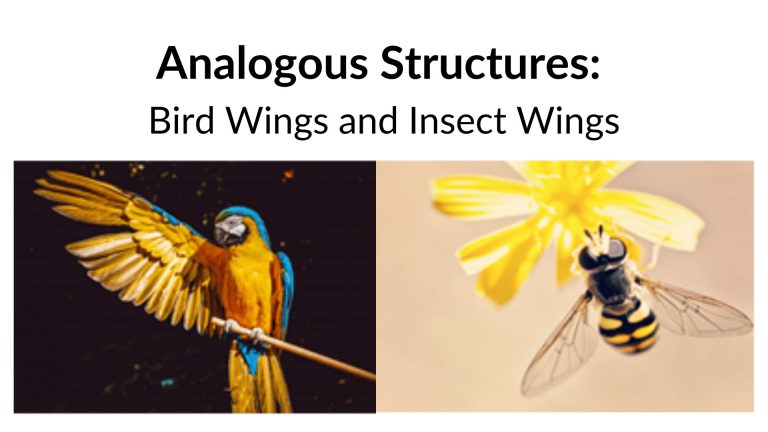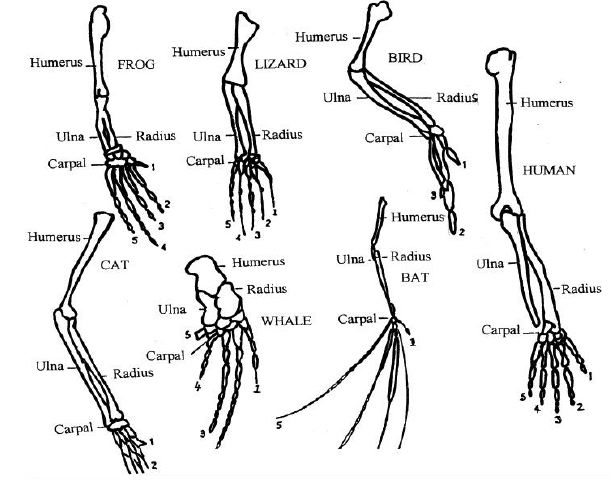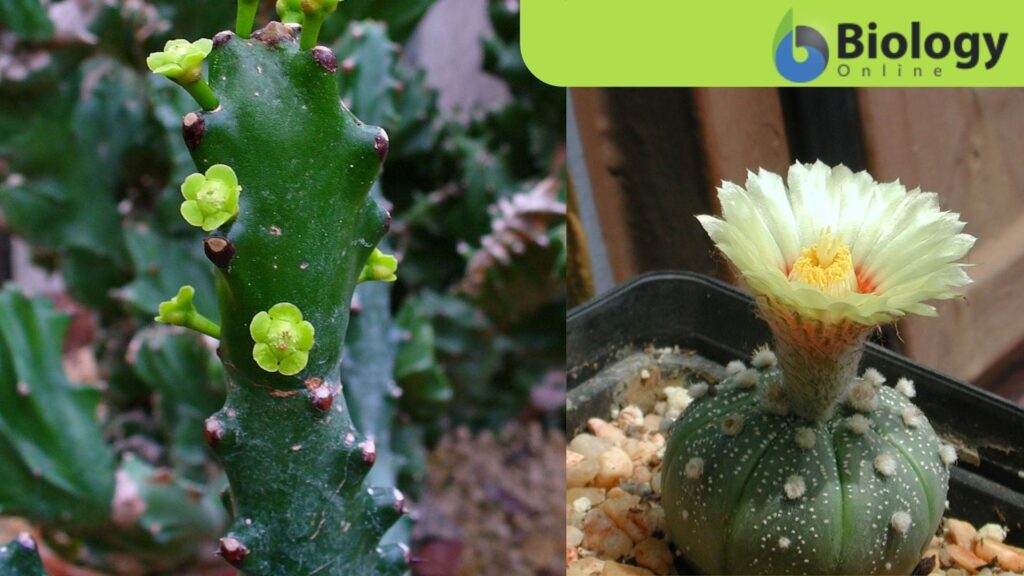
Analogous
adj.
[əˈnæl.ə.ɡəs]
Definition: In evolutionary biology, corresponding in function but not in evolutionary origin
Source: Modified by Maria Victoria Gonzaga, BiologyOnline.com, from the works of Vanessablakegraham(anatomical parts of flippers), CC BY-SA 4.0 and Jonathan Kington (water boatman), CC BY 2.0.
Table of Contents
In evolutionary biology, the meaning of analogous is “having similarities in functions but different evolutionary origins”. In other words, different species with different evolutionary lines use their biological structures for the same purpose. This type of evolution is termed convergent evolution. This is a kind of evolution in which organisms evolve structures that have the same functions despite their unrelated evolutionary ancestors. Thus, all the analogous structures of unrelated species would have corresponding functions, although having a different evolutionary or developmental origin. These structures can resemble certain aspects, for example, in function or appearance.
In evolutionary biology, “analogous” describes structures that correspond in function but not in an evolutionary origin. For example, analogous structures are structures that are similar or resembling in certain respects, e.g. in function or in appearance but not in evolutionary origin or developmental origins, such as the wings of a butterfly and the wings of a hummingbird are analogous.
Etymology: from Greek análogos, meaning “proportionate”. Compare: homologous, heterologous
Analogous Definition
What does analogous mean? The term analogous is derived from Greek analogos, which means “according to a proper ratio or proportion”. These structures evolved independently in different individuals to serve the same function. It can be explained in two ways:
- Equivalent in some respects, e.g. human brain and computer
- Corresponding functions but different developmental origins, e.g. wings of a bee and wings of a hummingbird
In analogous structures, they may not evolve concurrently or at the same time. They are also not inherited by the same ancestor.
Identifying Analogous Structures
Scientists usually identify analogous structures by studying the known relatives of two compared species. Apes and humans seem to share a common lineage, for example, as both groups have many anatomical features that are quite similar, e.g. forelimbs. Their fossil record shows that they share a common ancestor. In this case, their forelimbs are not considered analogous. However, if they do not have a common ancestor sharing the evolutionary feature, then the structures in question are analogous. This is commonly exemplified by the wings of bats and insects. The two groups have different evolutionary lineages and therefore their wings are considered analogous.

Analogous Structures vs. Homologous Structures
The difference between analogous and homologous structures can be defined by sharing a common evolutionary line and function. Unlike analogous structures, homologous structures share a common ancestor but may no longer serve the same function.
Homologous structures share a distinct evolutionary connection and yet those structures may have become adapted to serve another or different purpose. These structures though are used as strong evidence for the theory of evolution. There is no reason why the same bones were present in the fins of a whale and the wings of a bat unless they evolved from the same developmental line.
Take a look at the figure below. The bones that form human fingers were inherited from an ancestor shared by all mammals. Bats, dogs, and whales have the same bones. However, some of them have evolved into acquiring unique or distinct features. For example, bats have acquired wings, dogs walk on them, and whales adapted fins.

As we have discussed above, the bones of the forelimbs of humans and bats have the same morphological structure and they share the same embryonic origin. Even though these structures have the same fundamental skeletal structures they evolved to serve different functions. Like all other mammals, the bat forelimb’s major components include humerus, radius, ulna, and phalanges, the digits are quite elongated, radiating around the wrist and webbed. However, there is a delicate membrane called a patagium stretching between the arm and the finger bones. The membrane is an extension of skin made up of muscles, nerves, blood vessels, and connective tissues.
As opposed to homologous structures, analogous structures had evolved separately in different periods serving a similar function. Fins of fish and flippers of the whale (mammals) are an example. These structures have evolved from unrelated animals and yet are used for swimming. The analogous structures may be dissimilar concerning anatomy whereas the homologous structure may have the same anatomical features. Homologous structures share similar developmental patterns; analogous structures do not.
| Table 1: Difference between homologous and analogous structures | |
|---|---|
| Homologous structures | Analogous structures |
| Homologous, in biology, is defined as having similar or corresponding features and share a common evolutionary origin | Analogous, in biology, is defined as having the same or corresponding roles (function) but do not share a common evolutionary origin |
| Although the structures depict a common ancestral origin, the structures may have a function different from each other | Do not share common ancestors but have the same or corresponding function |
| Examples: forelimb of human, bat, dogs, and whale all have been evolved from common ancestors. However, they may be used differently among different species or groups. | Examples: wings of butterfly and insect. They have not evolved from the same lineage but serve the same function, which is flight. |
Evolutionary Process
We pointed out earlier that analogous structures have evolved by convergent evolution having dissimilar or unrelated ancestors. These structures do not necessarily have the same anatomical features, and they also have a different developmental origin. These common traits evolve independently of each other. The evolution of these structures is associated with how the species make adaptations in a similar environment.
All these analogous structures are evidence of evolution, which implies that the species evolve in response to their environment. Natural selection favored the features that enable the species to adapt, survive, and thrive. They may have evolved diverse features from a common lineage but the function may well serve one that suits their ecological niche. We conclude that all these analogous structures are evidence that different species evolve somehow in correspondence but independently.
Analogous Examples
Below are some of the examples of analogous structures:
- Analogous wings
- Analogous bills
- Water-conservation anatomy in plants
Wings through ages
As discussed above, individuals develop analogous structures independently and at different times. All creatures evolved wings to overcome the same evolutionary problem: how to fly through the air. However, all of them evolved wings on different occasions throughout history.
Insects were the first to develop these structures, propelling their bodies and making them through the air. They make it possible by using parts of their exoskeletons to pass air through. After millions of years, reptiles learned the same thing. Pterosaurs developed a skin membrane between their finger and ankle bones that made them able to propel through the air. Millions of years later, these structures were separately evolved by dinosaurs for flight – using their feathers, which were developed to keep warm to propel them into the sky. Eventually, these small feathered dinosaurs evolved into birds. (See figure 1) Certain mammals, such as bats, also evolved anatomical features to enable flight. Various fossil records of wings with analogous structures have been found. They implicate different ancestral origins and yet they served a similar function.
Duck-billed platypus
Platypus evolved some biological structures to solve the problem of gathering food like fish, duck, or other aquatic plants from water. When its first sample was sent to the British Museum, they tried to pry those structures apart, assuming they were fake. The scientists believed that the duck’s bill had stuck on the body of a beaver-like animal. Both ducks and platypi do not share a common ancestor and do not even evolve in the same era. However, they evolved similar solutions when they moved from land to water.
Cacti and water conservation
Some of the plant genes meant for water conservation share a similar look, e.g. Euphorbia and Astrophytum. Both have round, ball-shaped bodies divided into eight wedges; both have hard thorns pointing out from the middle of each wedge, which protect them from herbivory. This is particularly remarkable as these two species are distantly related and live in different parts of the world. Astrophytum evolved in North America while all other genus members are cacti, which live in southwest deserts. Euphorbia, on the other hand, evolved in the deserts of Africa.
Both of these African and North American plants conserve water by reducing their surface area, developing round, ball shape, thick and waxy skin, and placing prickly deterrents on its skin to protect animals that try to eat it for its moisture.

Here are some other examples of analogous structures:
- The complex eyes of mammals, squid, octopus, and some arthropods, including insects, spiders, and crustaceans, are being evolved at different times. These structures in all different species are used for the same function, i.e. vision.
- The corresponding exoskeletons of brachiopods and bivalve mollusks.
- Growth hormones, i.e. gibberellin and abscisic acid, of plants and fungi.
- The smelling organs are an example of an analogous organ. The smelling structures of the terrestrial coconut crab are similar to the sensilla of insects. They developed the same structures that can detect smells in the air and flick antennae for improved reception.
Try to answer the quiz below to check what you have learned so far about the term ‘analogous”.
References
- Convergent Evolution: Recurrence of Form Tree of Life: Exhibits: Yale Peabody Museum of Natural History. (2015, June 12). Retrieved from Yale.edu website: Link
- Convergent Evolution. (2019). Retrieved September 3, 2019, from Utexas.edu website: Link
- Evolution Theory and Science. (2019). Retrieved September 3, 2019, from Berkeley.edu website: Link
- Prum, R. O. (19 December 2008). “Who’s Your Daddy?”. Science. 322 (5909): 1799–1800.
- Wipfler, B. et al. (19 February 2019). “Evolutionary history of Polyneoptera and its implications for our understanding of early winged insects”. Proceedings of the National Academy of Sciences. 116 (8): 3024–3029.
- BBC NEWS Science/Nature Pilfering crab has an insect’s nose. (2009). Retrieved from Bbc.co.uk website: Link
- Coconut crab. (2019). Retrieved from Mcgill.ca website: https://www.cs.mcgill.ca/~rwest/wikispeedia/wpcd/wp/c/Coconut_crab.htm
©BiologyOnline.com Content provided and moderated by Biology Online Editors.





